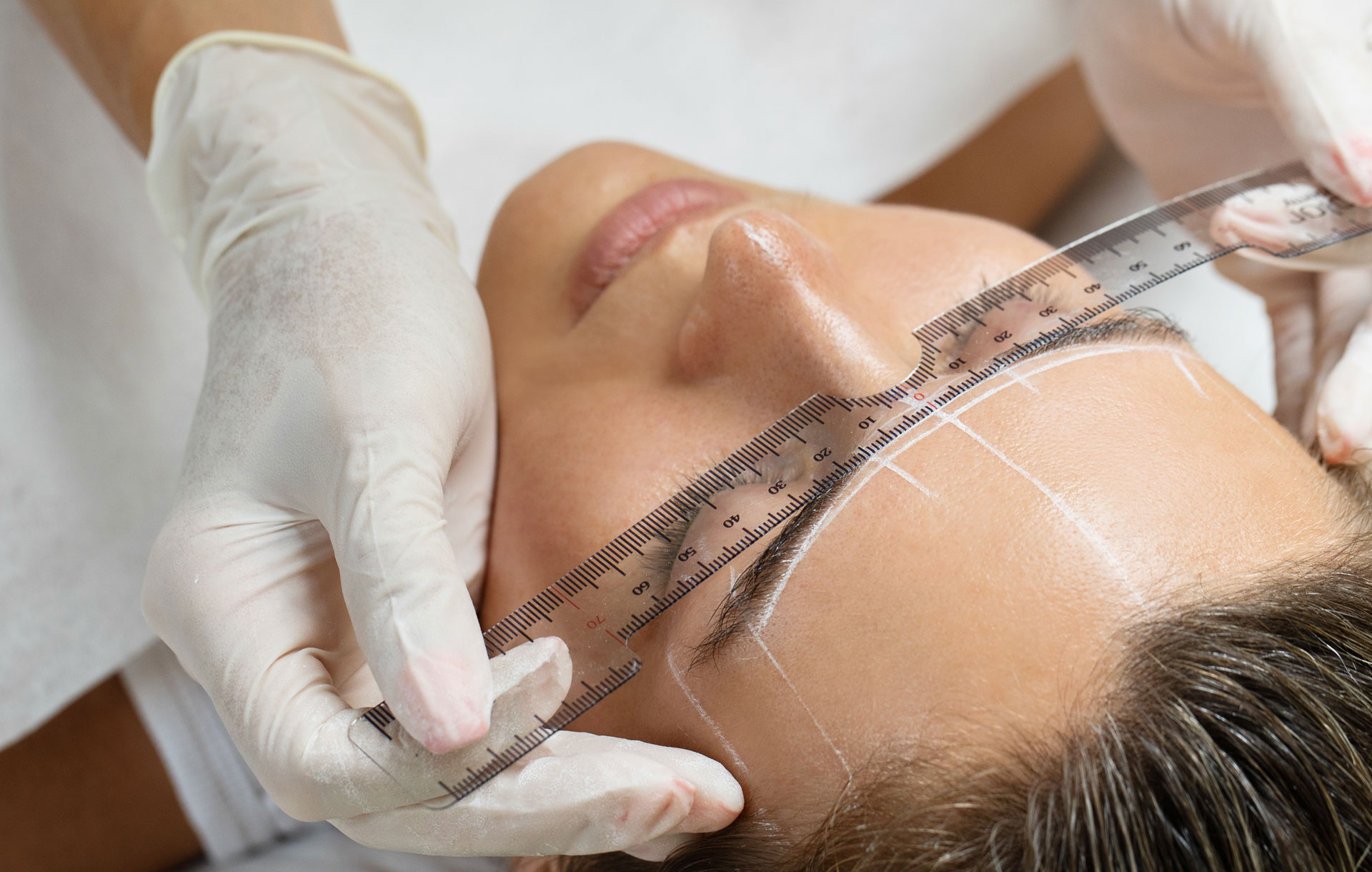
Building framework for shaping and creating the perfect brows
Brows, brows, brows, a multimillion-dollar industry. Brows have become a girl’s true best friend. From the runway to the supermarket, women everywhere desire flawless brows to boast on the daily. Now you can give your client the brows she’s always wanted with Brow Mapping. What is brow mapping you ask? Brow Mapping is the art of using measurements and facial landmarks to create symmetrical brows.
[ihc-hide-content ihc_mb_type=”show” ihc_mb_who=”2,4,6,7,5″ ihc_mb_template=”3″ ]
Permanent makeup created the need for accuracy in microblading and powder brows.
It is very common to hear brow artists in the industry say “Brows are sisters not twins.” We all have that one brow that acts more like a distant cousin than sister.
Brow Mapping has now given artists the techniques and skills to create symmetrical brows. Although an advanced technique typically used for microblading can still be utilized to perfect any brow service, Brow Lamination, Tinting, Waxing, and even threading can benefit from the precision and accuracy brow mapping can provide.
There are several techniques and tools commonly used for Brow Mapping. I recommend using the string technique with regular thread. This advanced mapping technique allows for you to create symmetry using geometry. It will include parallel lanes and intersecting lines. Using a ruler and a caliper also helps to ensure the brows are the same size and distance from each other.
The art of brow mapping begins with identifying anatomical landmarks on the client’s face. This has been referred to as the Golden Ratio or the rule of thumb when it comes to brow measurements. God knew exactly what he was doing when he created faces allowing artists to easily locate where to start and end the brow. There are four places that allow brows to be created.
Finding the center of the face is the most important. If the center line is off, then it will make it more difficult to locate where the front of the brow should start creating either far set or close-set eye appearance. Locating the center of the face can be easily done by looking at the clients’ chin and following the center up through the cupid’s bow of the lip and then the front of the forehead. Using those landmarks will help guide you to finding an accurate center even if people have larger or smaller facial features.
Finding the fronts of the brow will help to make sure the brows are the same difference from the center of the face. The fronts usually correspond to the outer tear duct area of the eyes. Often due to over plucking or thinning hair due to aging, the front of the brows can appear sparse. This can make it difficult for the client and artist to know where the brow hairs should begin. However, knowing how to find where the front brow should start will allow you to create more fullness and natural looking brows.
Arch Placement is very important to accurately identify. If the brow arch is placed in the wrong area, it can give the appearance of short brows. Many clients want a higher arch so it is important during mapping that you are using the correct technique to keep the arches at the same height on both brows.
Tail placement will help to give the final finish of a brow. If the tail of the brow is lower than the front of the brow, it can give the appearance of a confused looking facial expression. If the front of the brow is lower than the tail, it will create the look of angry facial expression. We want our clients to appear natural in all facial expressions.
Once the artist has found the places to start the rest will fall in place. Using measuring tools and a china wax marker (brow pencil), an artist can begin to draw the design of the brows. Brow Mapping can seem challenging, but it does get better with time and practice. Allow yourself to take the plunge and become a brow mapping master!
[/ihc-hide-content]












